 Misconceptions
Misconceptions  Misconceptions
Misconceptions  History
History 10 Amazing Roman Epitaphs
 Weird Stuff
Weird Stuff 10 Niche Subcultures That Are More Popular Than You Might Think
 Mysteries
Mysteries 10 Tragic Disappearances and Deaths in Joshua Tree National Park
 History
History 10 Ways Childhood Really Sucked in the Old West
 Music
Music 10 Name Origins of Famous Bands from the 1990s
 Religion
Religion 10 Biggest Turnarounds by the Catholic Church
 Weird Stuff
Weird Stuff 10 Unbelievable Times Laws Had Unintended Consequences
 Humans
Humans Ten Historic Women Who Deserve Way More Credit Than They Got
 Movies and TV
Movies and TV 10 Films That Spawned Major Lawsuits
 Misconceptions
Misconceptions 10 Phony Myths and Urban Legends That Just Won’t Die
 History
History 10 Amazing Roman Epitaphs
 Weird Stuff
Weird Stuff 10 Niche Subcultures That Are More Popular Than You Might Think
Who's Behind Listverse?

Jamie Frater
Head Editor
Jamie founded Listverse due to an insatiable desire to share fascinating, obscure, and bizarre facts. He has been a guest speaker on numerous national radio and television stations and is a five time published author.
More About Us Mysteries
Mysteries 10 Tragic Disappearances and Deaths in Joshua Tree National Park
 History
History 10 Ways Childhood Really Sucked in the Old West
 Music
Music 10 Name Origins of Famous Bands from the 1990s
 Religion
Religion 10 Biggest Turnarounds by the Catholic Church
 Weird Stuff
Weird Stuff 10 Unbelievable Times Laws Had Unintended Consequences
 Humans
Humans Ten Historic Women Who Deserve Way More Credit Than They Got
 Movies and TV
Movies and TV 10 Films That Spawned Major Lawsuits
10 Amazing Historical Conflicts That Are Completely Forgotten
While some wars and skirmishes stand out and are immortalized in television, art, and film, history is full of thousands of fascinating conflicts that most have never heard about. The following are just 10 of these.
10The Battle Of Bloody Bay
c.1480

This just might be the mother of all father versus son conflicts.
After King James I of Scotland was captured and held prisoner in England in 1406, Scottish barons gained tremendous authority over the people. In the northwest of Scotland, the Macdonald clan held the most power, calling themselves the “Kings of the Isles” and starting a self-appointed rule over the region. This proved to be extremely troublesome for the crown.
Everything was to change, however, when John Macdonald took over as ruler of the clan. After making a treaty of peace between his clan and the crown, with the condition of their providing aid in subjugating the rest of Scotland, John’s illegitimate son Angus Og rose up in defiance of the treaty and its stipulations, splitting the Highlands into opposing sides.
With Angus Og and his father John commandeering either side, the two armies met in an extraordinarily violent and murderous skirmish that took place off the coast of Mull. Og’s rebellion turned out to be a great success. He seized his father and had him imprisoned along with some of his leading men, thrusting him into leadership of the Macdonald clan. His tumultuous reign only ended with his assassination 10 years later.
9The Lusitanian War
155–139 B.C.

When the army under praetor Servius Sulpicius Galba and proconsul Lucius Licinius Lucullus occupied the land of the Lusitani, a small Celtic tribe, the Lusitanians offered a treaty of peace to the Romans along with willful submission. After the Romans made a promise to maintain peaceful relations and even offered land for the Lusitanians to settle in, they lured the men out of their mountain stronghold. The tribe thought they would discuss negotiation terms. Instead, they were surrounded and slaughtered by the thousands.
Out of this massacre, the humble shepherd Viriathus survived and became the virtuous leader of his fellow countrymen. He rallied his people in resistance of the Romans and promised safety and victory, though they were vastly outnumbered. Using cunning battle strategies and guerrilla tactics, Viriathus repeatedly defeated the Romans in different battles.
Historian Appian called one of these maneuvers “dashing around on the same field.” Viriathus and his troops would attack and withdraw, scatter but then regroup, strike, and then disperse. The Romans, used to organization and logic, were thrown off by the confusion of these tactics. They died by the sword and by being driven off cliffs, while others were taken prisoner. At times, though, the Lusitanian leader let vulnerable Romans return home unharmed.
Viriathus on one occasion sent three of his intimate friends to negotiate with the Roman consul Caepio, who bribed the messengers with promises of a large reward in return for assassinating Viriathus. On arriving back at his camp, they entered their leader’s tent while he was lying down and stabbed him in the throat, ending his brilliant and rousing campaign against the Romans.
8The Siege Of Aornos
327 B.C.

This battle secured Alexander the Great’s legendary reputation as one of history’s greatest besiegers. Rebel Indian tribesmen in the region near Aornos, in modern-day Pakistan, found a safe spot on top of a steep, 2,000-meter (7,000 ft) ridge. It proved to be an almost invincible fortress. There, Alexander the Great could not starve the natives out or use the machines he would generally use for a siege.
Any other leader would’ve quit at this point, but we’re talking about Alexander the Great here.
Alexander had a 250-meter (800 ft) chasm between him and the rebels, but he ordered it filled in. He was then able to threaten their encampment with his catapults while gaining access to the north side of the plateau, where he met an imposing cliff. Still not deterred, he took 30 men and climbed the cliff face, only to be bombarded with boulders on one of the ledges, killing all the soldiers except for him.
Not one to surrender, Alexander tried again a few nights later, while the natives were celebrating their supposed victory. This time, his troops made it all the way up. Alexander’s shield bearers slaughtered many of the Indians, despite an attempted retreat by the tribesmen. The Greek leader ended up seizing the tribal stronghold.
7The Persian Civil War
522–521 B.C.
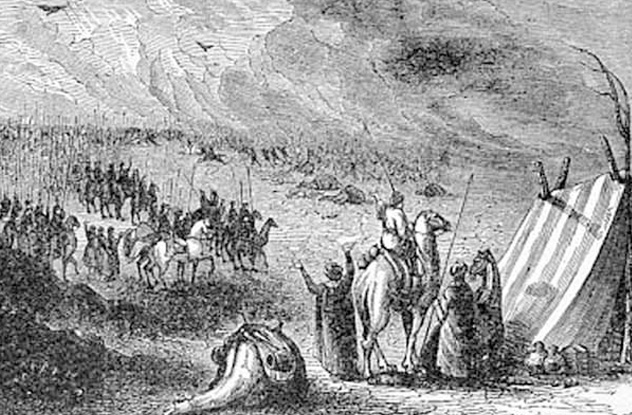
Cambyses II, the son and heir of King Cyrus the Great, wanted no opposition to the throne, so he decided to secretly execute his brother Smerdis. Then, while he went off to wage war in Egypt (successfully conquering much of it in a series of campaigns), one of the palace officials named Patizithes had Cambyses ousted from being king and appointed his brother Guamata as the new ruler. Since the murder of Cambyses’s brother was done in secret, Guamata ascended the throne pretending to be Smerdis.
At least, that was the view held by historians for generations. According to accounts, Guamata so resembled Smerdis that the slain man’s harem of wives were completely fooled. Modern historians are skeptical, arguing that this whole thing may have been a story cooked up by Guamata’s successor, Darius the Great, as an excuse for grabbing control of the empire.
Upon hearing of the revolution back in his home grounds, Cambyses began the journey home. He never actually made it back; varying accounts state that he either died of an injury or committed suicide. And Guamata didn’t do too well for himself, either. Seven months after he began his rule, he was assassinated, and Darius the Great took over.
6The Zeebrugge And Ostend Raids
1918
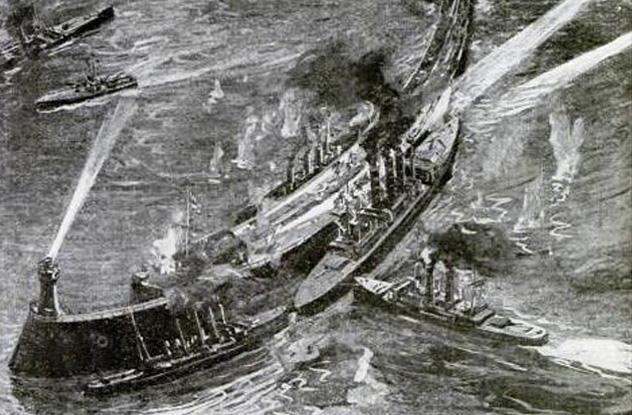
This action took place at the Belgian ports of Zeebrugge and Ostend, key submarine bases that the Germans used for their sea war on Allied ships during World War I.
The British came up with a secret plan to block the exits of both ports and thus prevent the German U-boats from leaving. In April 1918, 75 ships formed a naval force under the command of the intrepid Commodore Sir Roger Keyes. The attack failed.
The winds made the British cruiser Vindictive’s smokescreen ineffective, and enemy fire turned the ship in the wrong direction, rendering their guns useless. This allowed the German artillery units to fully function and disable several other ships. The attack on Ostend turned out even worse. The British planned to sink two of their own cruisers in the harbor to block the U-boats’ passage, but the cruisers never even made it to the harbor entrance.
All in all, about 500 British lives were lost. Yet Allied news sources presented the raids as fabulous British victories at the time and awarded several medals and a knighthood for Keyes.
5The Yellow Turban Rebellion
A.D. 184
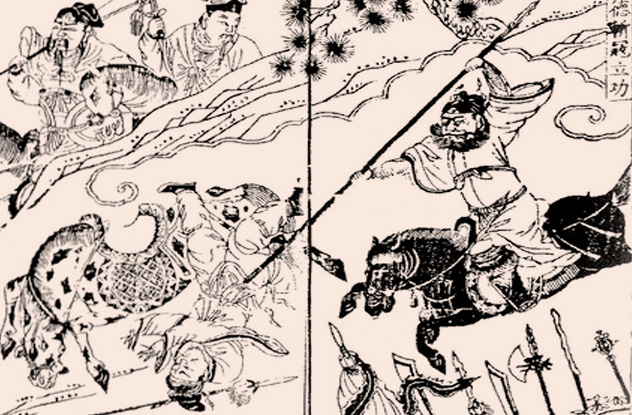
The Yellow Turbans were a secret society present in China during the first centuries of our common era, led by the faith healer Zhang Jue. China suffered a severe pestilence in the early 180s, along with droughts and the flooding of the Yellow River. Many discontent peasants in eastern and central China, then under the oppressive Han Dynasty, joined Jue in his sect. The peaceful faith’s devotees wore yellow headdresses, were taught that their problems were a result of sin, and advocated magical practices and rituals.
It wasn’t long before Jue declared that he could change the world for the better and bring about a golden age of peace. Speaking out against the emperor and the harsh, corrupt eunuchs who controlled him, Jue inspired the religious group to rise in a menacing rebellion, which the emperor tried to quell by conscripting armies of intimidating proportions.
Although Jue eventually died from an illness without seeing his purpose realized, and many of the Yellow Turbans were massacred by imperial troops, the revolt continued and is said to have hastened the downfall of the tyrannical dynasty.
4The Whitman Massacre
1847
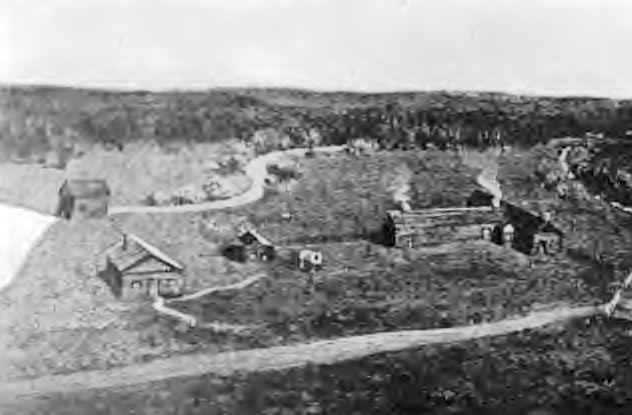
Although many of the early stories of conflicts with Native Americans rightly put the blame on the Europeans, the Whitman Massacre shows the other side in a tragic story of deadly misunderstanding.
Dr. Marcus Whitman was a missionary, teacher, and physician who entered the region of Waiilatpu near the Walla Walla River in Oregon. He initially came to start a Presbyterian mission, setting it near the Cayuse natives and the Hudson’s Bay Company post.
Building a farm and a mill at the site, he spent his time helping the Cayuse learn Christianity peacefully and also helping many immigrants to the area settle down. He treated their infirmities and cared for orphans whose parents had died on the journey. After the missionary board that funded Whitman’s mission decided to discontinue the efforts when the natives proved unfriendly and slow to convert, Whitman traveled 5,000 kilometers (3,000 mi) across the country to Boston in the dead of winter to plead to keep the mission open.
While he was in Boston pleading the cause of the Cayuse, some of these very same natives attacked the mission, burning down the mill. Shortly after he made the journey back home to resume his work, a wagon train brought measles to Oregon, and since his medicine couldn’t save the native children (who had no immunity), the Cayuse believed that Whitman was poisoning them. In November 1847, Whitman, his wife, and 11 others were massacred by the hostile natives, which initiated a long and brutal war in Oregon.
3The Thai War
1411

It all started with the death of King Sen Muang Ma. A conflict arose between his two sons as to who would succeed Ma to the throne. Prince Yi Kumkam decided to claim the throne in the capital Chiengmai with the help of the Ayutthayans, an army from the kingdom of King Intharaja from central Thailand.
First attacking the city of Phayao, they hastily constructed a 20-meter (70 ft) fort from which they fired into the city with a cannon. Although initially without a similar weapon, the Phayaoans melted down brass tiles and formed a cannon of their own, which they used to repel the Ayutthayans and demolish their earthen fort.
Undeterred, the Ayutthayans moved on to Chiengmai. A fierce battle between the two sides ensued, with not much gain on either side. Then the rival prince Sam Fang Ken offered to settle the bloody dispute by the outcome of a single battle between two celebrated competing warriors. Whoever won the battle would win the throne for his side.
After an intense and undoubtedly sweaty battle that lasted for several hours, the Ayutthayan warrior was wounded in the big toe by his Chiengmai opponent. This resulted in the enthronement of Sam Fang Ken and the end of the clash.
2The Amboyna Massacre
1623
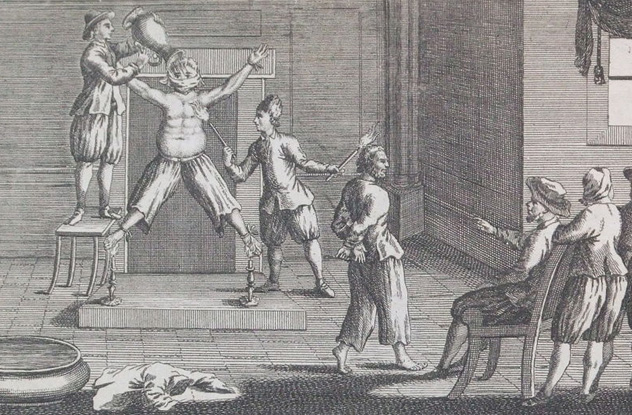
If there’s anything to learn from this story, it’s to never mess with a Dutchman and his spices.
Tensions had been boiling for a long time between Britain’s East India Company and the Dutch in the East Indies, the rivalry in the spice trade almost resulting in war. A peace treaty in 1619 seemed to work, but that all fell apart on the island of Aboyna. The island, now called Maluku, was at the time inhabited by both the Dutch and the English with their respective trading fortresses. In 1623 on this island, a mercenary samurai was discovered to be spying on the Dutch.
Suspicious and eager to find some pretext to kick out their English competition, they tortured the Japanese ronin at length until he revealed that the English were plotting a highly improbable assassination of the Dutch governor to seize control of their trading post. Although the English traders on Amboyna and the surrounding islands professed their innocence, torture by water and fire forced them to confess similar details.
English, Japanese, and Portuguese traders were executed by the Dutch. It took 30 years for compensation to be granted to the heirs of the English who had been beheaded.
1The Great Locomotive Chase
1862

On April 12, 1862, volunteer Union soldiers with James J. Andrews as a commander disguised themselves as Confederates and went deep into enemy territory. The plan was to cut the rail line between Atlanta and Chattanooga. This would sever a vital connection and allow the Union soldiers to destroy bridges and communication lines. All they had to do was hijack a giant Western & Atlantic Railway train pulled by a locomotive called The General.
Miraculously, they made it. And barreling down the track toward Chattanooga, the Union soldiers felt unstoppable. Then they glimpsed another locomotive gaining on them.
The other locomotive was the Texas, commandeered by Confederate soldiers who’d discovered the scheme and set chase. After an adrenaline-pumping 150 kilometers (90 mi), the General ran out of fuel. Andrews and his men abandoned the train and scattered to avoid capture. Their escape was short-lived—Andrews and several of his crew were caught and hanged.
I am an up-and-coming author that has written poems, screenplays, magazine articles, scripts for videos, and a comedy-adventure novel for kids.








